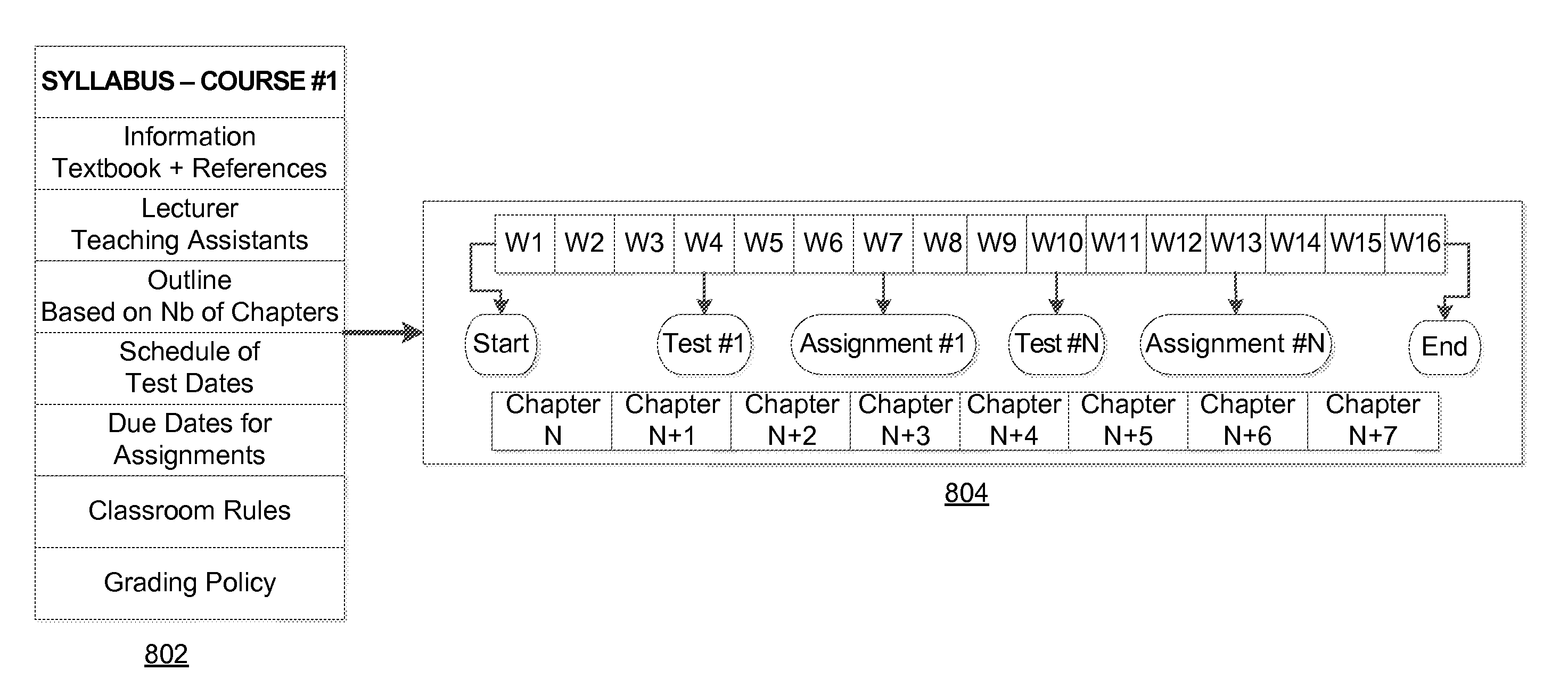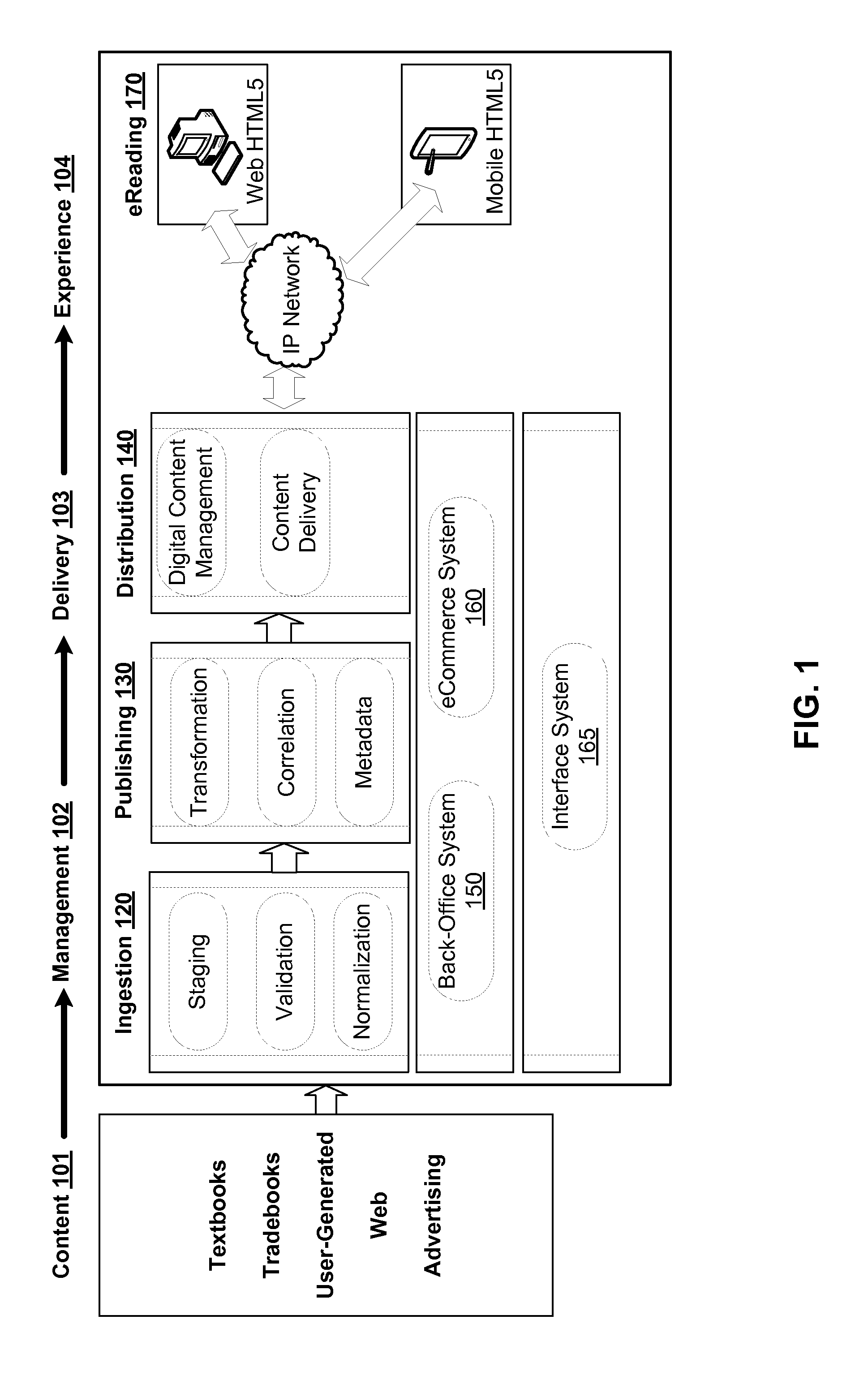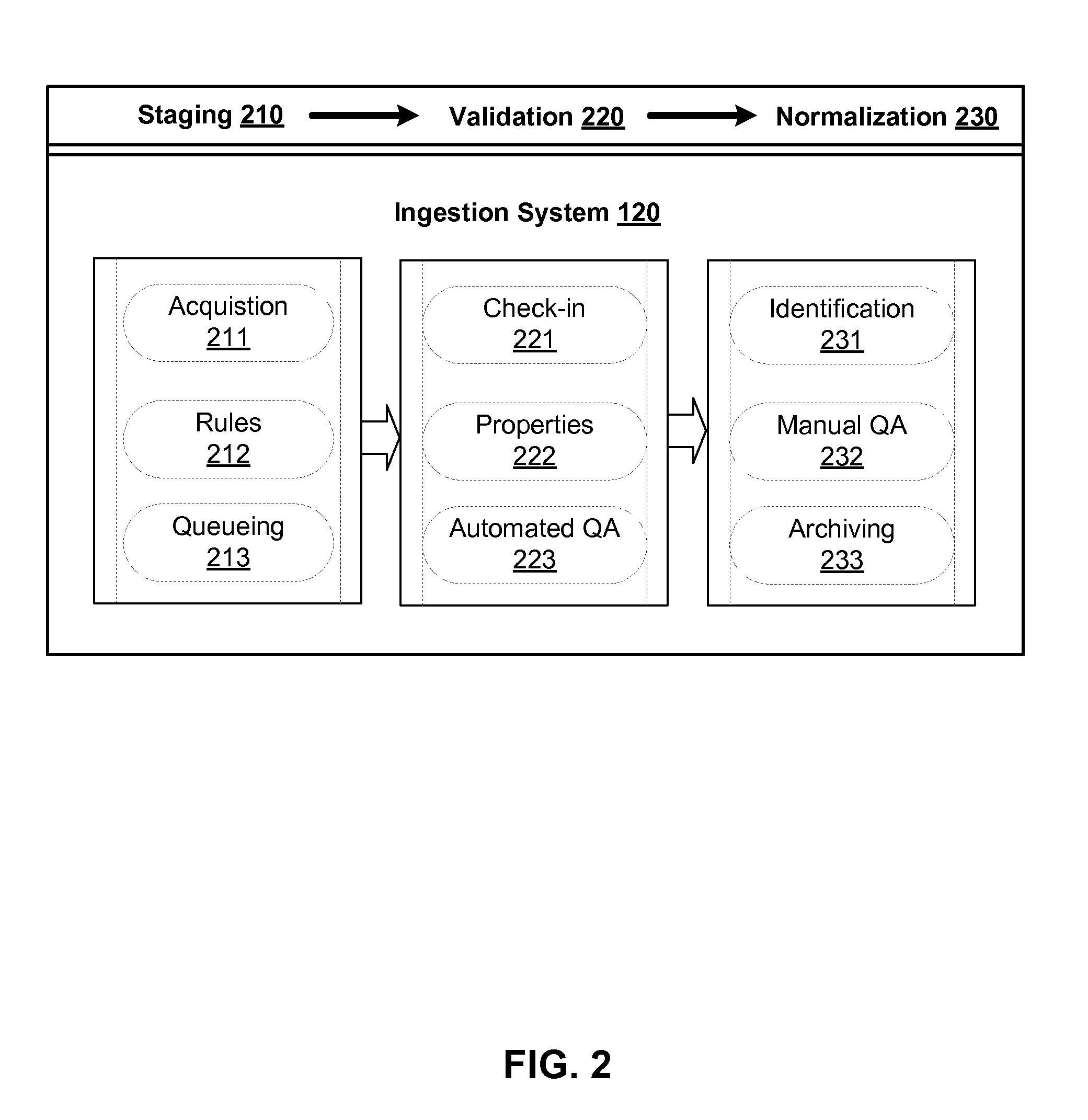Time Based Data Visualization
a data visualization and time-based technology, applied in the field of publishing platforms, can solve the problems of complex business rules and content models, difficult to ingest and aggregate a large volume of educational content efficiently and reliably, and achieve the effect of improving the user's reading experience with the documen
- Summary
- Abstract
- Description
- Claims
- Application Information
AI Technical Summary
Benefits of technology
Problems solved by technology
Method used
Image
Examples
Embodiment Construction
System Overview
[0029]Embodiments of the invention provide an education digital reading platform that provides aggregation, management, and distribution of digital education content and services. The platform is an integrated solution for delivering content and education services through an on-line delivery network to connected client devices. FIG. 1 is a high-level block diagram of the platform environment in accordance with an embodiment of the invention. As illustrated in FIG. 1, the platform is organized around four main function blocks: content 101, management 102, delivery 103, and experience 104.
[0030]Content 101: The platform is configured to automatically gather and aggregate content from a large number of sources, categories, and partners. Examples of content include textbooks, tradebooks, user-generated content, web content, and advertising content. The content function block 101 of the platform collects the content into a formalized staging environment for further process...
PUM
 Login to View More
Login to View More Abstract
Description
Claims
Application Information
 Login to View More
Login to View More - R&D
- Intellectual Property
- Life Sciences
- Materials
- Tech Scout
- Unparalleled Data Quality
- Higher Quality Content
- 60% Fewer Hallucinations
Browse by: Latest US Patents, China's latest patents, Technical Efficacy Thesaurus, Application Domain, Technology Topic, Popular Technical Reports.
© 2025 PatSnap. All rights reserved.Legal|Privacy policy|Modern Slavery Act Transparency Statement|Sitemap|About US| Contact US: help@patsnap.com



